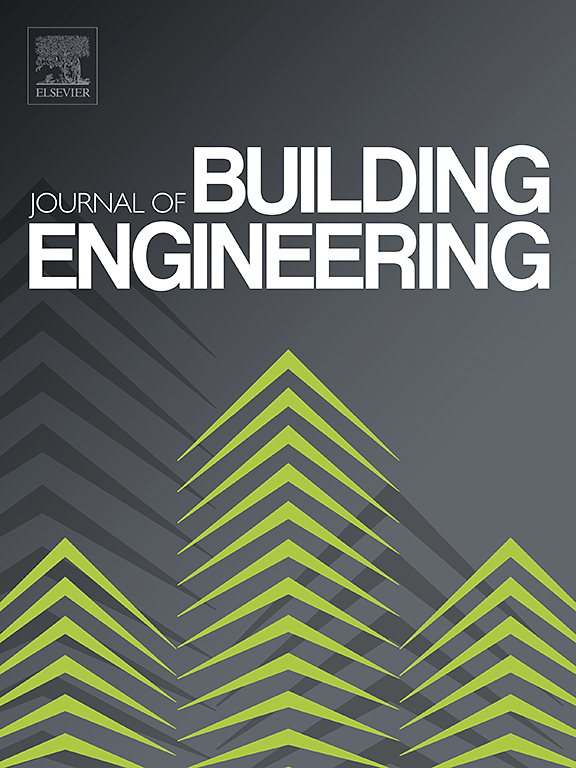天然纤维作为砂浆和混凝土的加固材料:中美洲和南美洲地区的系统回顾
IF 7.4
2区 工程技术
Q1 CONSTRUCTION & BUILDING TECHNOLOGY
引用次数: 0
摘要
本研究探讨了有关使用天然纤维(NF)加固砂浆和混凝土的最新研究。天然纤维是传统纤维的一种可持续发展的环保型替代品,为减少垃圾填埋提供了一种途径。各大洲环境的多样性为天然纤维提供了广泛的研究对象,对具有代表性的地区进行研究,可以对全球不同的条件进行比较,从而加深对天然纤维的了解。无纺布面临的一个主要挑战是容易受到侵蚀性环境的影响,因此需要进行预处理,碱性处理是增强无纺布特性的最常用方法。据报道,混凝土和砂浆的可操作性会随着无纺布含量的增加而降低,但这可以通过添加更多的水或超塑化剂来缓解。尽管 NF 有很多好处,但建议使用量不要超过 0.5%(体积分数),因为较高的 NF 含量通常会导致结果的机械性能降低。NF 增强材料的耐久性和微观结构因测试条件和纤维类型而异,此外,在盐水或加速老化环境中进行的测试通常结果不佳。进一步研究 NF 的耐久性,尤其是干湿循环和氯化物渗透方面的研究至关重要。环境分析表明,使用无机纤维的混凝土可降低能源需求,减少碳足迹。鉴于无纺布在全球的复杂性,需要在其他地区进行系统研究,以进行比较分析。尽管如此,使用 NF 作为加固材料有助于减少农业废弃物,使其不再被填埋,符合循环经济原则,促进可持续发展。本文章由计算机程序翻译,如有差异,请以英文原文为准。
Natural fibers as reinforcement of mortar and concrete: A systematic review from Central and South American regions
This study examines recent research on mortar and concrete reinforced with natural fibers (NF). NF are a sustainable, eco-friendly alternative to conventional fibers, offering a way to reduce waste that would otherwise end up in landfills. The diversity of environments across continents provides a wide range of NF to study, and examining representative regions advances the knowledge obtained by enabling comparisons among varied global conditions. A key challenge with NF is their susceptibility to aggressive environments, thus necessitating pretreatment, with alkaline treatment being the most common method to enhance NF properties. As it has been reported, the workability of concrete and mortar decreases as NF content increases, yet this can be mitigated by adding more water or superplasticizers. Despite their benefits, it is advised not to use more than 0.5 % vol. of NF, as higher amounts typically lead to a reduction in the mechanical properties of the result. The durability and microstructure of NF-reinforced materials varies in accordance with test conditions and fiber types, moreover, testing in saline or accelerated aging environments often yields poor results. Further research on NF durability, particularly regarding dry-wet cycles and chloride penetration, is crucial. Environmental analyses show that concrete with NF offers lower energy requirements and reduces carbon footprints. Given the global complexities of NF, systematic studies in other regions are needed for comparative analysis. Nonetheless, using NF as reinforcement helps reduce agricultural waste by diverting it from landfills, aligning with circular economy principles, and promoting sustainability.
求助全文
通过发布文献求助,成功后即可免费获取论文全文。
去求助
来源期刊

Journal of building engineering
Engineering-Civil and Structural Engineering
CiteScore
10.00
自引率
12.50%
发文量
1901
审稿时长
35 days
期刊介绍:
The Journal of Building Engineering is an interdisciplinary journal that covers all aspects of science and technology concerned with the whole life cycle of the built environment; from the design phase through to construction, operation, performance, maintenance and its deterioration.
 求助内容:
求助内容: 应助结果提醒方式:
应助结果提醒方式:


